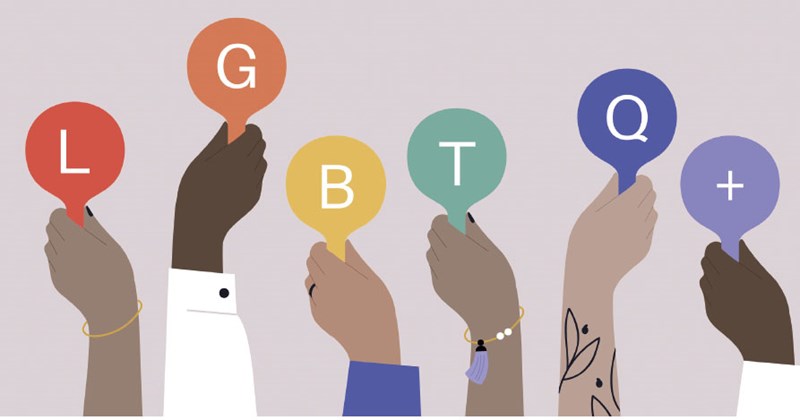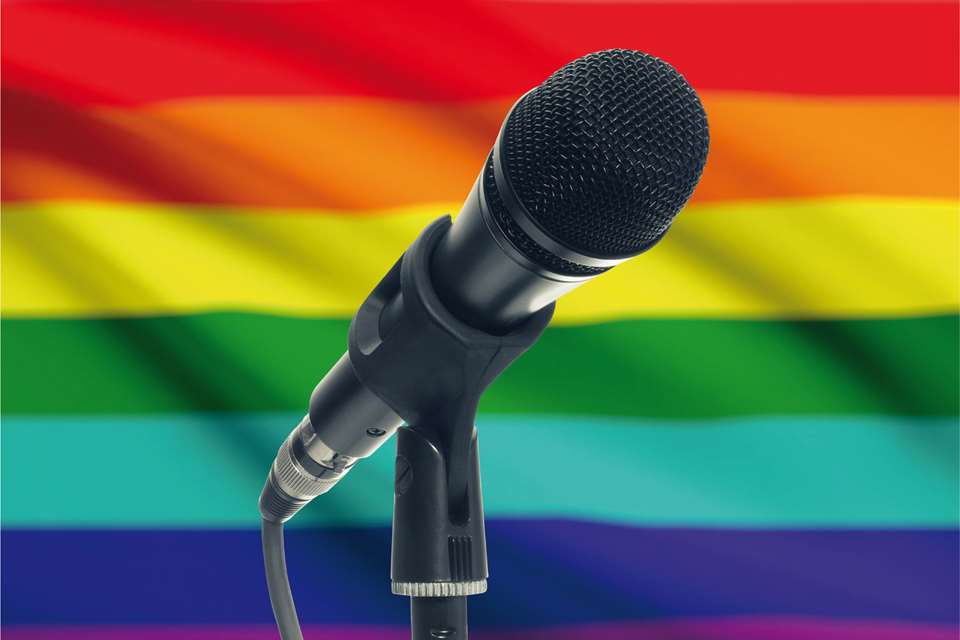LGBTQ+ inclusive singing in schools and youth choirs
Alexander Pullinger, Christian Hey
Wednesday, June 1, 2022
In a Vocal issue focus feature, countertenor, singing teacher, advocate and ally Alexander Pullinger and director, scenographer and trans activist Christian Hey share guidance for singing teachers and choral directors working with young people.

Hanna/AdobeStock
Choral directors and singing teachers, like all teachers, have a responsibility to create safe learning environments. It is the difference between a singer looking forward to lessons or being put off for good. We know that LGBTQ+ (especially transgender) students are at increased risk of being harmed in education by their teachers and peers (see Stonewall's Trans Report 2018). Therefore, we need clear, implementable, and visible LGBTQ+ policies in every institution, ideally with allocated staff members, to help support students and to build mutual respect in lessons. Notably, the music classroom also offers a rare opportunity to provide positive representations of diverse LGBTQ+ performers and composers, which helps affirm LGBTQ+ relationships, identities and voices within the student population.
Risk of harm
As a singing teacher and in my research, I have seen that the risk of harm to transgender students is much higher in singing spaces than in other teaching settings because this activity itself is often inappropriately gendered. For instance, choir directors often refer to ‘men's voices’ and ‘women's voices’, but mean tenors and basses or sopranos and altos respectively. This is hurtful to transgender singers whose voices may not conform to such expectations (for example, a high-voiced trans man, or low-voiced trans woman). I have seen several instances of transgender singers leaving singing altogether because a teacher lacked sensitivity and/or flexibility on this point. Regardless of whether you are aware of transgender singers in your choir, it is simply more accurate to address singers by their voice part instead of their gender.
Concert dress codes, too, can be an unnecessary source of agony for those who are misidentified by their teachers, or are yet to transition socially: students may be pressured to wear clothes that do not represent the aspiring singers they are. Remember, it is still possible to describe smart and even strict concert dress in inclusive ways. Listing required garments or combinations of garments, for example, without imposing body types or genders onto them, has enormous benefits that I have witnessed time and again for trans and non-trans singers alike.

NADIA_SNOPEK/ADOBESTOCK
Power to affirm
As new as all this may seem, gender non-conforming people have been here all along (see Feinberg, Transgender Warriors). It is only with the recent increase in visibility and visible allyship that institutions have finally begun to discuss change. Remember, however, that you cannot tell who is LGBTQ+ just by looking; and rising transphobia in the UK (an indirect result of the increased visibility we now enjoy) has led to many people keeping this aspect of who they are completely hidden. We must accept that there may be transgender students, unbeknownst to us, singing in our choirs and having lessons with us.
Singing has the power to affirm, bring together and improve the mental health of all our students – and LGBTQ+ students (especially transgender students) are disproportionately affected by problems that these proven outcomes of singing could alleviate. Devastatingly, there is a risk of serious harm if the learning environment fails to include them. We must acknowledge the diversity of voices that exists, and work in an informed way.
An individual may fear how feminine or masculine their voice sounds to others, and how the act of singing heightens their awareness of their own body. Additionally, transgender students may wear binders (specially constructed but constrictive chest garments), waist trainers or prosthesis, and they could be commencing HRT (hormone replacement therapy) – all of which require a considered approach if teaching is to be done safely and sensitively (see Jackson Hearns and Kremer, The Singing Teacher's Guide to Transgender Voices).
Inclusion benefits all
The oft-quoted ‘No pride for some of us without liberation for all of us’ (frequently attributed to Marsha P. Johnson) isn't just a slogan – it's literal and demonstrable. It is only when we meaningfully uplift each letter under the LGBTQ+ umbrella that every unique voice can be heard and celebrated fully. In learning environments, this means that the steps we take to make singing accessible for transgender students will, in turn, benefit all members of the student population – LGBTQ+ or otherwise – who feel they do not ‘fit in’.
At the core of even the most subtle forms of transphobia, and indeed homophobia, lies the misogynistic conviction that men should be one way and that women should be another. When we directly address these assumptions by using the strategies discussed here, we create meaningful spaces where such expectations are challenged, and diversity is not only respected but celebrated. We show our students that there is no right or wrong way to be ourselves. This knock-on effect is a necessary outcome of transinclusivity, and one that is so often forgotten.
Targeted not generalised
It would be callous to end this article without a word of caution: while inclusive policies for transgender students will go on to benefit everyone under the LGBTQ+ umbrella, merely adopting a more generalised positive sentiment towards LGBTQ+ students (which does not in the very first instance consider the specific needs of each) can be more dangerous than not having a policy at all. We must be careful not to use rainbow flags as blankets to hide the very real and specific barriers that exist to some members of the LGBTQ+ community.
Increased visible support for LGBTQ+ students and staff will mean nothing if targeted developments have not been made. (As a quick example, and because I've had to say it more times than I can count – please put sanitary bins in all your men's cubicles before, and only before, you adorn the toilet entrance with the transgender symbol.)
Above all, I encourage teachers and leaders to consider and adapt these ideas to the unique circumstances of their own learning environments, including the individuals passing through them year on year. I encourage teachers and leaders to reflect on how best they can use their space, knowledge, and resources to foster an atmosphere of mutual respect and limitless expression to last well beyond Pride month.



